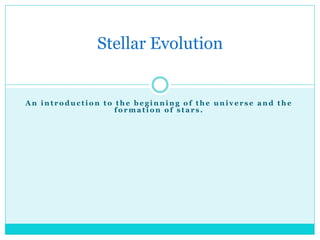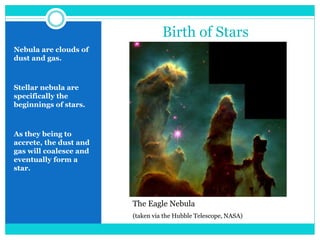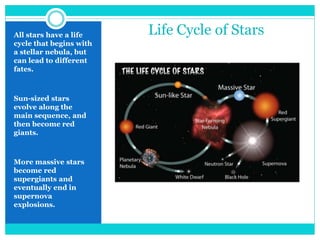The document provides an introduction to the formation of stars and their evolution from the beginning of the universe. It describes how the Big Bang occurred 13.9 billion years ago and the first stars formed 400 million years later. Stars form from the collapse and accretion of nebulae made of dust and gas. The life cycle of stars is represented in the Hertzsprung-Russell diagram and depends on the star's mass, with low-mass stars ending as white dwarfs and high-mass stars ending in supernova explosions.






